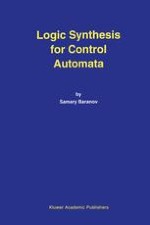1994 | Buch
Über dieses Buch
Logic Synthesis for Control Automata provides techniques for logic design of very complex control units with hardly any constraints on their size, i.e. the number of inputs, outputs and states. These techniques cover all stages of control unit design, including: description of control unit behavior by using operator schemes of algorithms (binary decision trees) and various transformations of these descriptions -- composition, decomposition, minimization, etc.; synthesis of a control automaton (finite-state machine); synthesis of an automaton logic circuit: with matrix structure as a part of LSI or VLSI circuits; as multilevel circuit with logic gates; with standard LSI and VLSI circuits with and without memory. Each chapter contains many examples, illustrating the use of the models and methods described. Moreover, the special last chapter demonstrates in detail the whole design methodology presented in the previous chapters, through the examples of the logic design for a control unit.
The models, methods and algorithms described in the book can be applied to a broad class of digital system design problems including design of complex controllers, robots, control units of computers and for designing CAD systems of VLSI circuits using FPGA, PLD and SIC technologies.
Logic Synthesis for Control Automata is a valuable reference for graduate students, researchers and engineers involved in the design of very complex controllers, VLSI circuits and CAD systems. The inclusion of many examples and problems makes it most suitable for a course on the subject.
Anzeige
